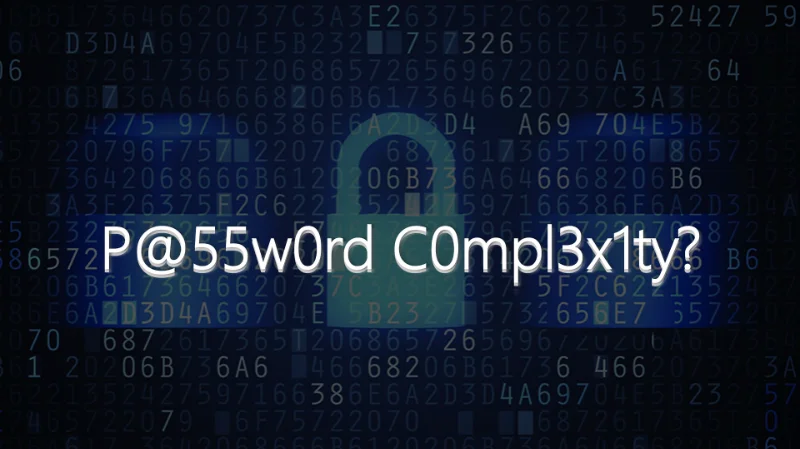Current Password Guidance is Nonsensical
Over the past 10 or so years, it seems that most websites are requiring more and more complex passwords, with antiquated rules regarding length, which characters to include, lifespan, etc. These rules are often confusing, and can lead to users writing down their passwords, or using the same password across multiple sites. Additionally, they add no real benefits, and often make passwords more vulnerable due to the complexity of their management by end users.
In a recent article on Ars Technica, it was reported:
The National Institute of Standards and Technology (NIST), the federal body that sets technology standards for governmental agencies, standards organizations, and private companies, has proposed barring some of the most vexing and nonsensical password requirements. Chief among them: mandatory resets, required or restricted use of certain characters, and the use of security questions.
Choosing strong passwords and storing them safely is one of the most challenging parts of a good cybersecurity regimen. More challenging still is complying with password rules imposed by employers, federal agencies, and providers of online services. Frequently, the rules—ostensibly to enhance security hygiene—actually undermine it. And yet, the nameless rulemakers impose the requirements anyway.
Last week, NIST released its second public draft of SP 800-63-4, the latest version of its Digital Identity Guidelines. At roughly 35,000 words and filled with jargon and bureaucratic terms, the document is nearly impossible to read all the way through and just as hard to understand fully. It sets both the technical requirements and recommended best practices for determining the validity of methods used to authenticate digital identities online. Organizations that interact with the federal government online are required to be in compliance.
A section devoted to passwords injects a large helping of badly needed common sense practices that challenge common policies. An example: The new rules bar the requirement that end users periodically change their passwords. This requirement came into being decades ago when password security was poorly understood, and it was common for people to choose common names, dictionary words, and other secrets that were easily guessed.
New Guidelines
The latest document contains several other common sense practices, including:
- Verifiers and CSPs SHALL require passwords to be a minimum of eight characters in length and SHOULD require passwords to be a minimum of 15 characters in length.
- Verifiers and CSPs SHOULD permit a maximum password length of at least 64 characters.
- Verifiers and CSPs SHOULD accept all printing ASCII [RFC20] characters and the space character in passwords.
- Verifiers and CSPs SHOULD accept Unicode [ISO/ISC 10646] characters in passwords. Each Unicode code point SHALL be counted as a single character when evaluating password length.
- Verifiers and CSPs SHALL NOT impose other composition rules (e.g., requiring mixtures of different character types) for passwords.
- Verifiers and CSPs SHALL NOT require users to change passwords periodically. However, verifiers SHALL force a change if there is evidence of compromise of the authenticator.
- Verifiers and CSPs SHALL NOT permit the subscriber to store a hint that is accessible to an unauthenticated claimant.
- Verifiers and CSPs SHALL NOT prompt subscribers to use knowledge-based authentication (KBA) (e.g., “What was the name of your first pet?”) or security questions when choosing passwords.
- Verifiers SHALL verify the entire submitted password (i.e., not truncate it).
Many of these guidelines are already in place at many organizations, but it’s good to see NIST taking a stand against some of the more nonsensical password rules that have been in place for years. Hopefully, this will lead to more secure passwords, and less frustration for end users.
